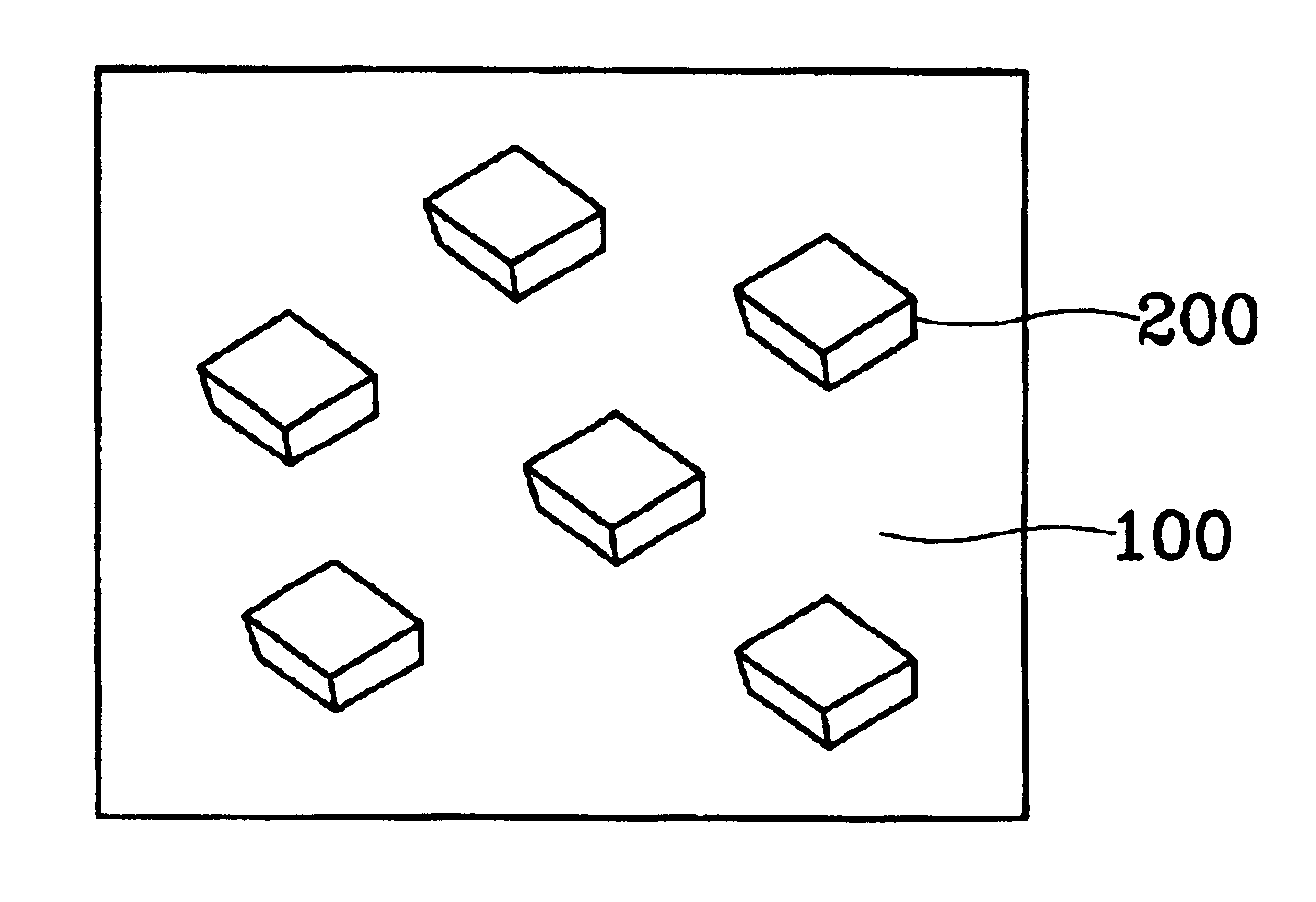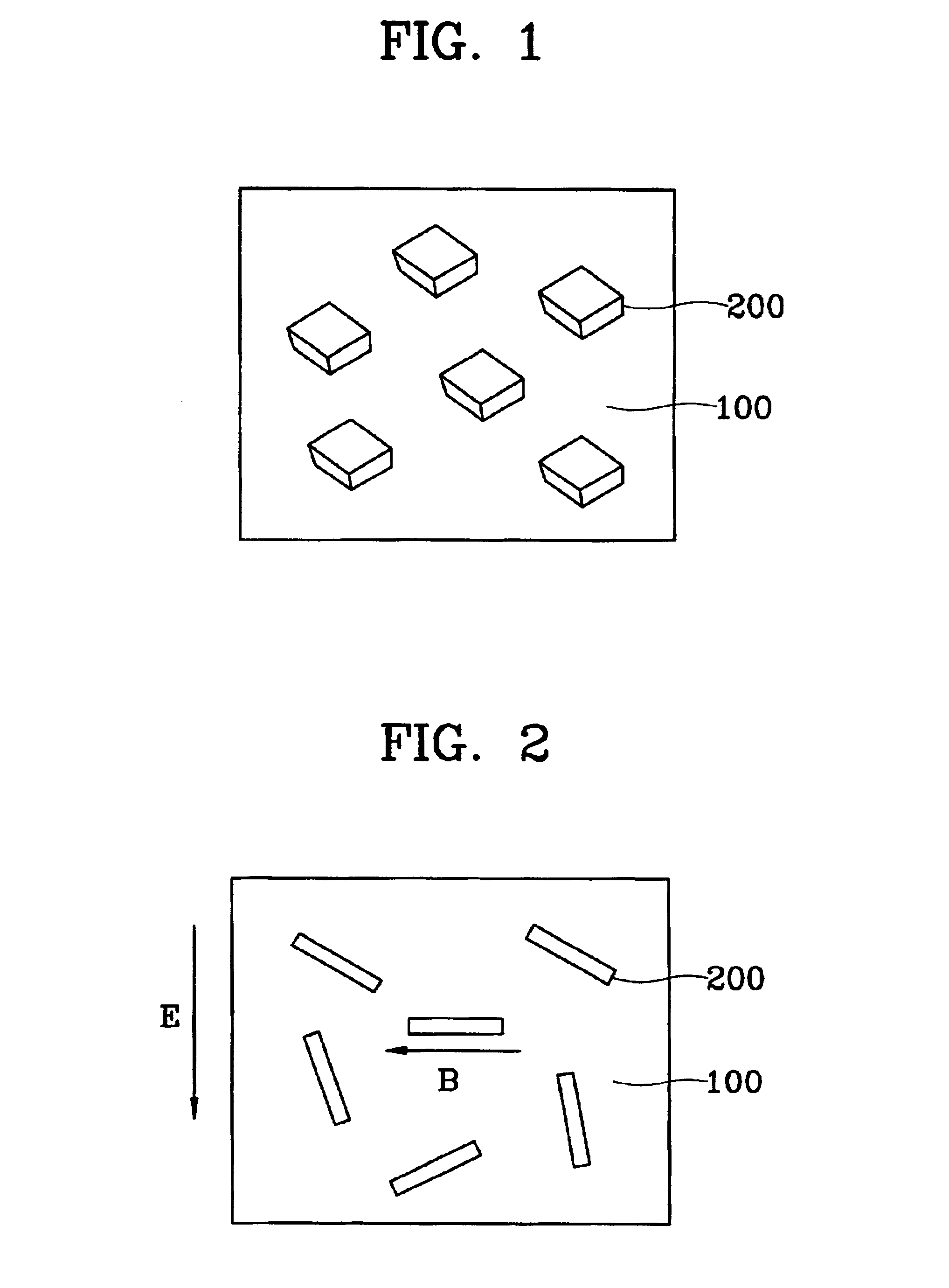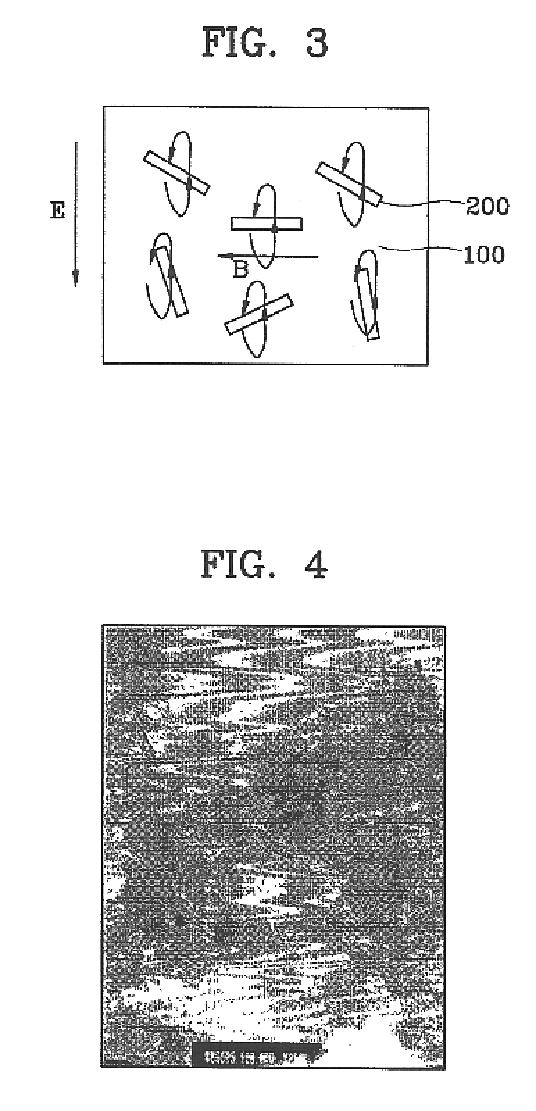Low dielectric constant composite material containing nano magnetic particles, and optical and semiconductor devices using the low dielectric constant composite material
a low dielectric constant, composite material technology, applied in the direction of magnetic bodies, semiconductor/solid-state device details, instruments, etc., can solve the problems of inability to meet the requirements etc., to achieve the effect of low dielectric constan
- Summary
- Abstract
- Description
- Claims
- Application Information
AI Technical Summary
Benefits of technology
Problems solved by technology
Method used
Image
Examples
embodiment 1
FIG. 1 is a schematic cross-sectional view for explaining a composite containing nano magnetic particles according to the present of the present invention.
In detail, a composite according to a first embodiment of the present invention includes a dielectric matrix 100 and nano magnetic particles 200 distributed in the dielectric matrix 100. The nano magnetic particles 200 may be of a spherical or non-spherical shape. Specifically, the non-spherical shape, e.g., ellipsoids, needle, plate or tetrahedral, is preferred. Otherwise, spherical nano magnetic particles may be mixed with non-spherical nano magnetic particles 200.
The dielectric matrix 100 is formed of an inorganic material such as silica, alumina or hydrosilsesquioxane, or an organic material such as polyimide, epoxy, polymethylmethacrylate (PMMA) or methyl silsesquioxane.
The nano magnetic particles 200 may be formed of a superparamagnetic material including a transition metal such as cobalt (Co) or nickel (Ni) or an oxide such...
example 1
Step 1. Synthesis of Surfactant (Salt) Having Metal Counter Ion
Nano magnetic particles were prepared by chemical sedimentation. 500 ml of 1M aqueous solution of iron (II) chloride was placed into 250 ml of 0.1M aqueous solution of sodium dodecylsulfate (C12H25NaO4S), which is an anion surfactant, and then reacted under a nitrogen atmosphere for 12 hours. When an orange color suspension was formed, a salt was separated from the resultant by sedimentation at 2° C. The separated salt was subjected to water-washing with a 0.1 M aqueous solution of iron (II) chloride three to five times and then recrystallized in water held at 50° C., to obtain high-purity iron (II) dodecylsulfate salt (Fe(DS)2). Similarly, instead of iron (II) chloride, nickel (II) chloride and zinc (II) chloride were used in the reaction to obtain a nickel (II) dodecylsulfate salt (Ni(DS)2) and zinc (II) dodecylsulfate salt (Zn(DS)2), respectively. The critical micelle concentrations of these salts are shown in Table 1...
example 2
Synthesis of Nano Magnetic Particle / Polyimide (PI) Composite
The nano magnetic particles prepared in steps 2 and 3 of Example 1 were unformly dispersed in a PI matrix to form a nano composite. The PI used as the matrix was prepared in the following manner and its physical properties were then measured.
To 115.97 g of anhydrous n-methyl-pyrrolidone (NMP) were added 6.37 g (0.029 mol) of 1,2,4,5-benzenetetracarboxylic acid (pyromellitic dianhydride (PDMA)), 11.50 g (0.036 mol) of 3,3′,4,4′-benzophenone tetracarboxylic dianhydride (BTDA), 13.00 g (0.065 mol) of 4,4′-diaminodiphenylether (ODA), and mixed at 10° C. under a nitrogen atmosphere for 6 hours, to polymerize polyamic acid having 20% solid content. The reactants used are ones that are commercially available. NMP was added to the polyamic acid having 20% solid content to prepare polyamic acids having 2%, 5% and 10% solid contents, respectively.
After polymerization, the higher viscosity of the polyamic acid was reduced to 20000 to ...
PUM
| Property | Measurement | Unit |
|---|---|---|
| glass transition temperature | aaaaa | aaaaa |
| glass transition temperature | aaaaa | aaaaa |
| dielectric constant | aaaaa | aaaaa |
Abstract
Description
Claims
Application Information
 Login to View More
Login to View More - R&D
- Intellectual Property
- Life Sciences
- Materials
- Tech Scout
- Unparalleled Data Quality
- Higher Quality Content
- 60% Fewer Hallucinations
Browse by: Latest US Patents, China's latest patents, Technical Efficacy Thesaurus, Application Domain, Technology Topic, Popular Technical Reports.
© 2025 PatSnap. All rights reserved.Legal|Privacy policy|Modern Slavery Act Transparency Statement|Sitemap|About US| Contact US: help@patsnap.com



